Meet the ‘Double Sunrise’ flight, the record-holder for the longest commercial flight in history! 😳 Back in 1943, this epic journey connected Perth, Australia, and Sri Lanka (known as Ceylon at the time). It served as an important route for mail and passengers during World War Two.
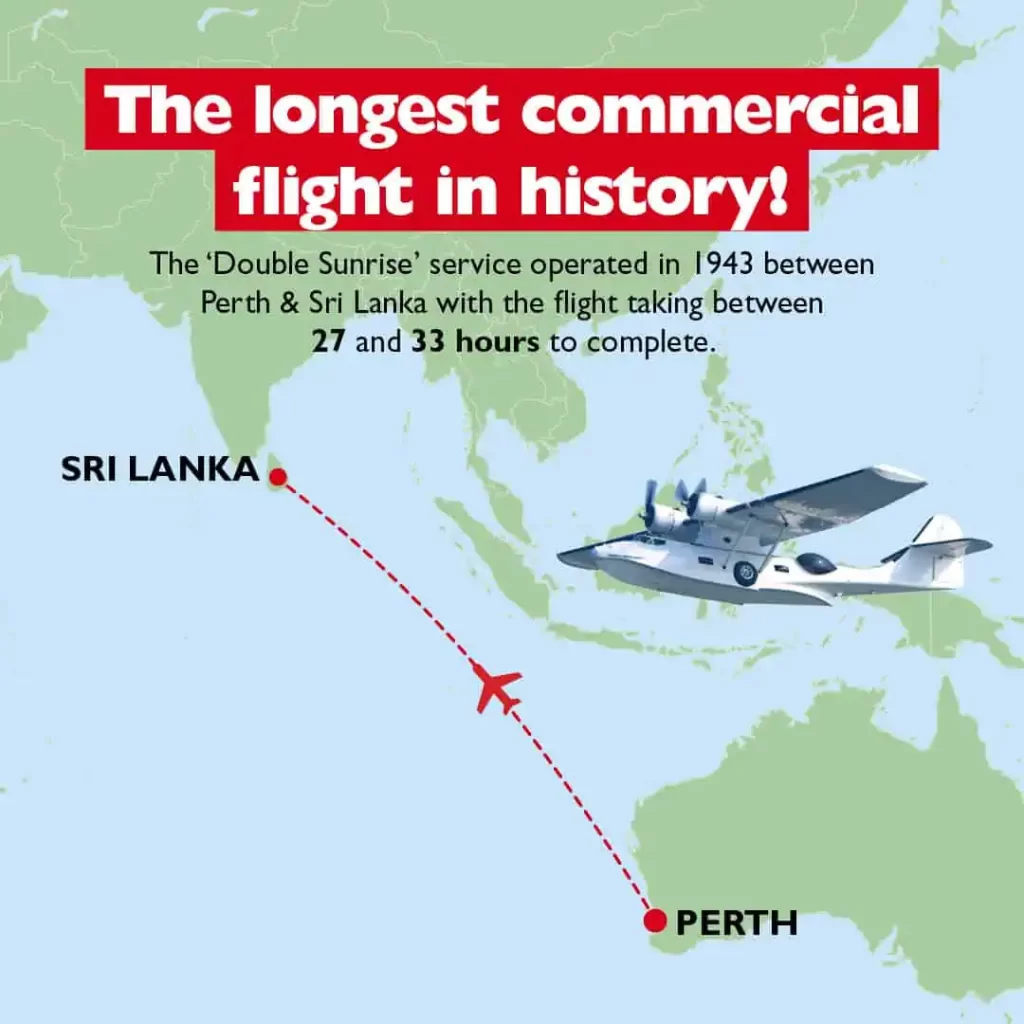
Mention Ceylon (now Sri Lanka) in the context of the Second World War and most people think of the Japanese air raids of Easter Sunday, April 5, 1942. Ceylon’s “most dangerous moment” of the war would have been much more horrific if not for the heroic deeds of a Canadian pilot, Squadron-Leader Leonard Birchall, and his crew aboard a Catalina flying boat. On April 4, while patrolling the Indian Ocean from their base at Koggala Lake, they spotted a fleet of Japanese warships in the distance and radioed a warning back to base. This critical message prepared Ceylon for the inevitable aerial onslaught by the enemy.
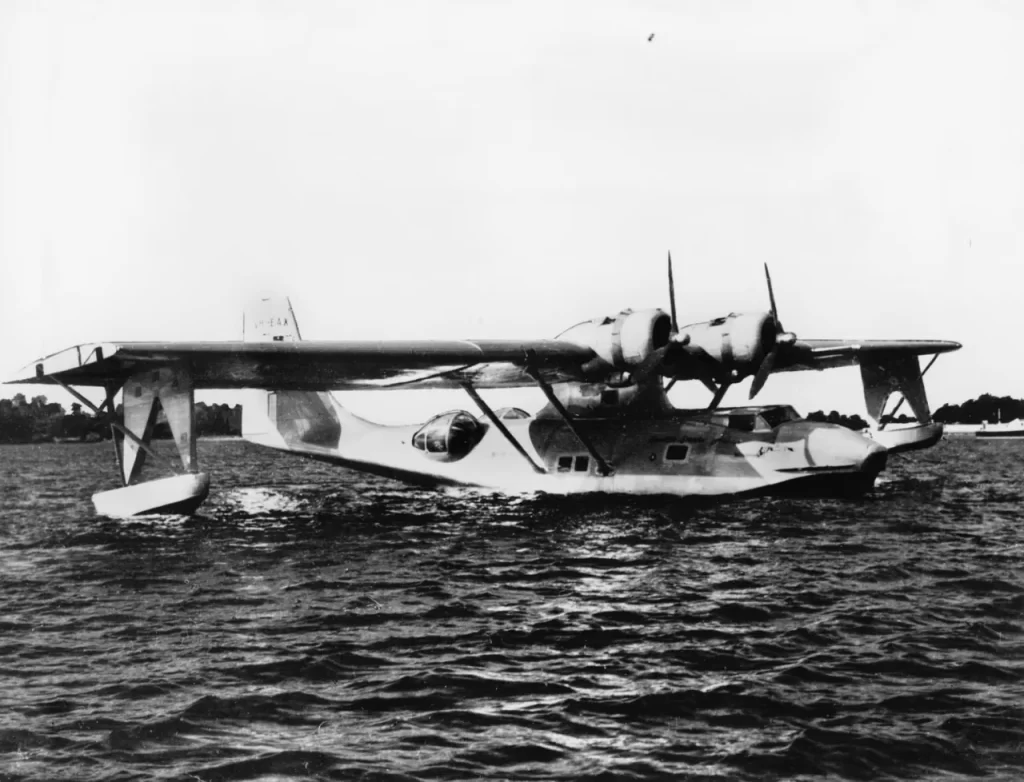
Birchall’s next priority was to turn and head for Koggala with haste. However, his slow-flying Catalina was no match for the Japanese fighter planes. Six Zero fighters launched from an aircraft carrier shot down the lumbering flying boat. Birchall and five of his crew survived the attack, only to be captured by the Japanese. Freed when the war ended, their endurance of torture, malnutrition, deprivation of medical supplies, and other atrocities at the hands of their captors was further testament to their courage and fortitude.
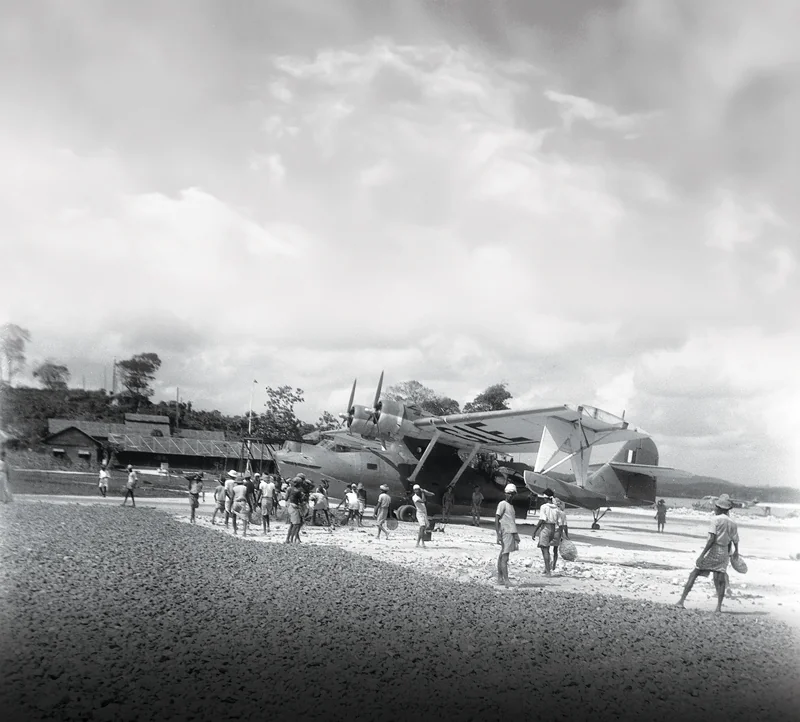
But Koggala Lake and Catalina flying boats had another significant role in World War Two. Today, few are aware that they combined to help maintain vital links between two far-flung nations in the face of further ravages by the Japanese.
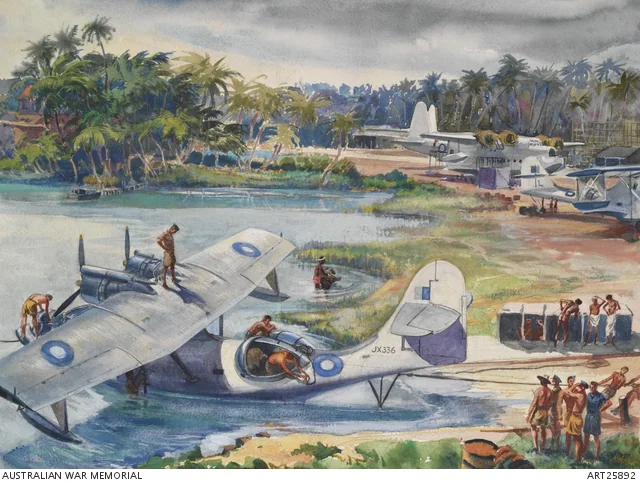
When Singapore was invaded by Japan on February 15, 1942, one dire consequence was a sudden stoppage of aerial services between Britain and Australia. The ‘Horseshoe Route’ had been flown with Short Empire flying boats from two airlines. Qantas Empire Airways operated the Australia-Singapore leg, linking up with Imperial Airways (precursor to BOAC and British Airways) for the longer haul to the United Kingdom.
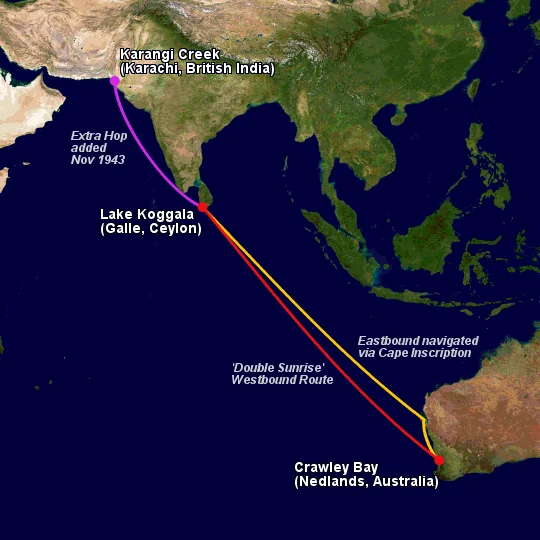
With Singapore in Japanese hands, alternatives to the route were hastily sought but proved tedious and time-consuming. Things looked grim until Capt. W. H. Crowther, a Qantas flying boat commander, suggested operating flying boats nonstop across the Indian Ocean, carrying passengers, freight, and mail from Western Australia to Ceylon, and continuing onwards to Karachi (then part of pre-Partition India). From Karachi, a BOAC aircraft would complete the flight to Britain.
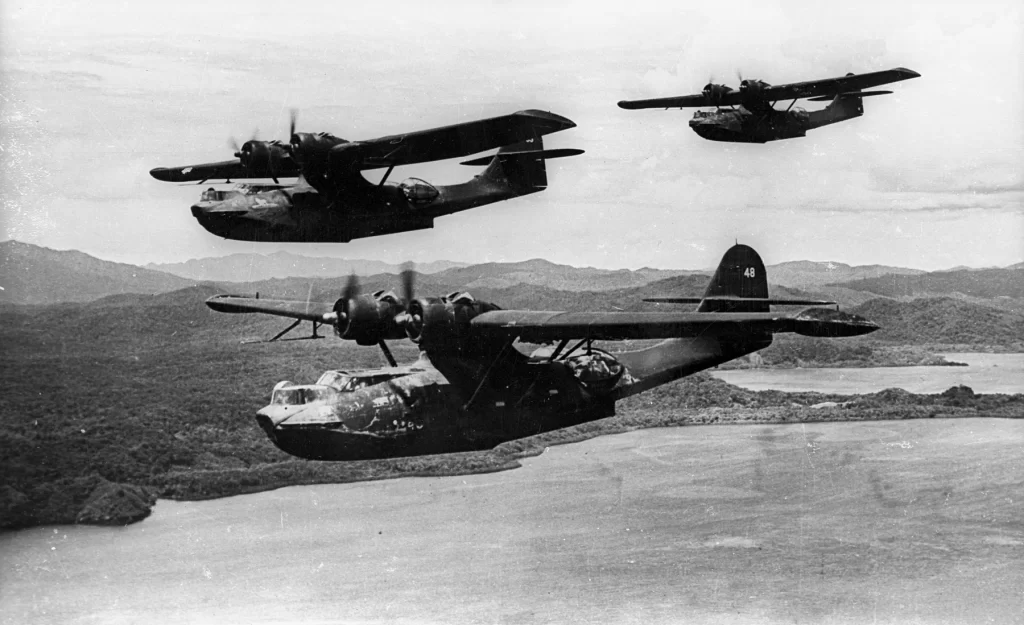
The plan was not straightforward. Until then, no aerial sector existed that even approached the nonstop duration of 28 hours estimated for the Indian Ocean crossing between Australia and Ceylon. After a series of successful route-proving flights, Qantas decided to purchase five Catalina flying boats from the Royal Air Force (RAF). To maximize their range and endurance, the aircraft were stripped of all non-essential equipment and auxiliary fuel tanks were installed.
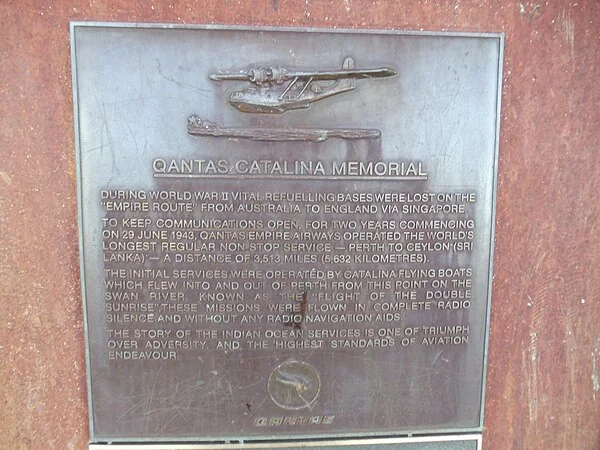
Trincomalee was first mooted as the Ceylonese terminal point for the transoceanic service. However, the necessity for special take-off techniques with a heavily-laden flying boat saw the sheltered waters of Koggala Lake selected in preference to the open seas of China Bay (Trinco). Also in Koggala’s favor was the availability of technical support from RAF Catalina and Sunderland flying boat units already stationed there.
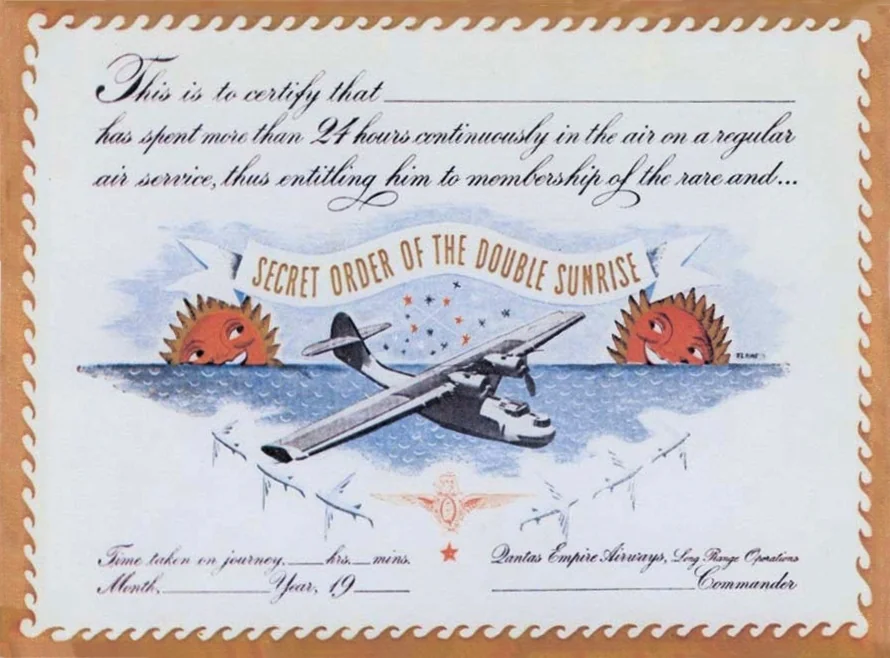
The inaugural service took off from Koggala Lake on July 10, 1943. Despite all but two crew members suffering food poisoning and unfavorable headwinds, the Catalina alighted on the Swan River in Perth, Western Australia just over 28 hours later.
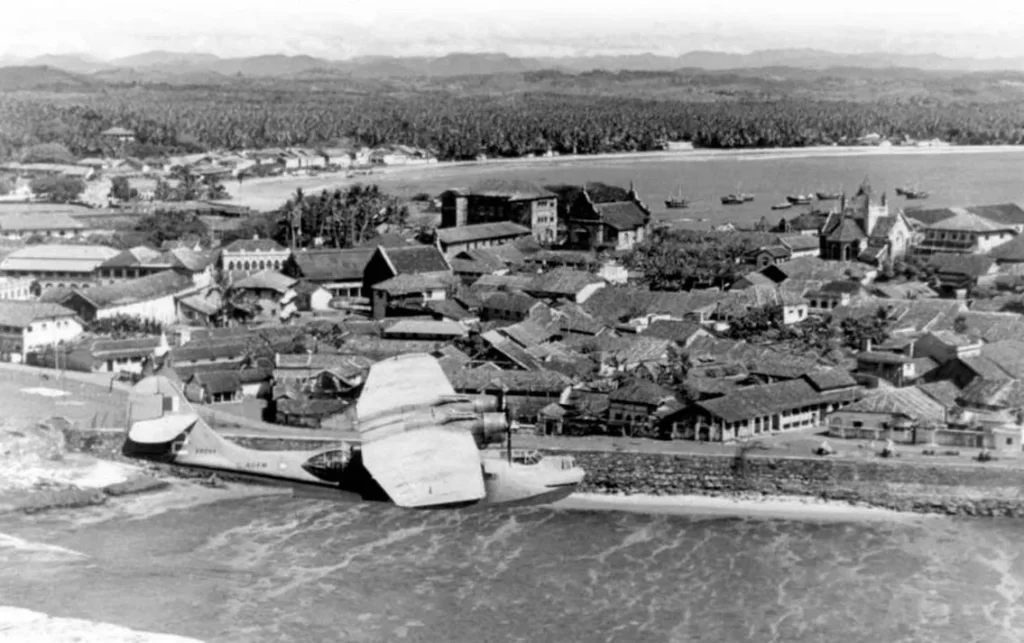
So began a regular air service that was both unusual and dangerous. The ever-present threat of detection by Japanese warplanes demanded that flights operated in strict radio silence throughout almost the entire duration of the long Indian Ocean crossing. The crew could only listen out for any weather reports they might be fortunate to intercept.
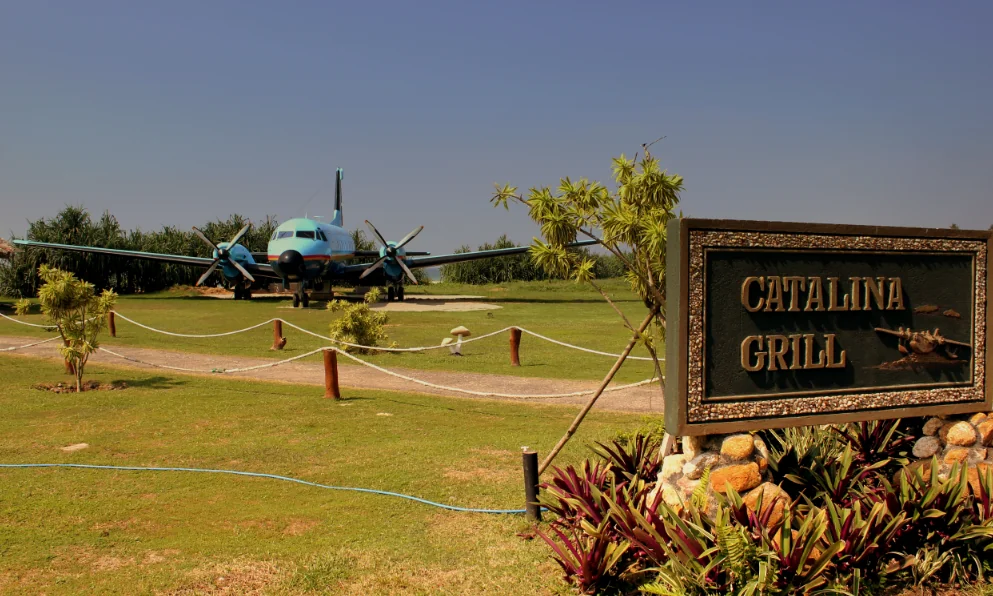
For eastbound passengers, the most curious aspect of the 28-hour flight was seeing the sun rise twice between take-off and touchdown. To commemorate this rare encounter, Qantas presented them with a certificate proclaiming their membership in “The Order of the Double Sunrise.”
Double Sunrise: History’s Longest Ever Commercial Air Service
In 1943, a unique operation began under a commercial airline service which remains the longest passenger airline service ever operated (in terms of duration) to this day. Known as the ‘Double Sunrise’ operation, these unique flights were inaugurated in 1943 to re-establish air links between Australia and England that had been cut due to the fall of Singapore to the Japanese in 1942.
From its inception, the service operated from a seaplane base in Crawley near Perth, Western Australia. Here, flights operated to the well-established Royal Air Force base at Lake Koggala near Galle in what was then Ceylon (now Sri Lanka). The service’s nickname derived from crew and passengers observing two sunrises on each flight.
The trailblazing route was later extended to Karachi in British India (now Pakistan). Karachi was the southernmost point on the vital empire route from London, operated by British Overseas Airways Corporation (BOAC).
In 1943, as World War II raged on in various parts of the world, re-establishing a safe air route between England and Australia became crucial for both governments. There was a need for passengers, mail, and goods to be transported between the two countries. Both nations had benefited from decent pre-war air links for many years as allies in the war and historically close cooperating members of the Commonwealth.
Following close cooperation between both governments and their armed forces leaders, it was decided that Royal Australian Air Force (RAAF) personnel would be seconded to a new special division set up to operate the flights under Qantas’ name and brand. This division was tasked with flying Consolidated PBY Catalina flying boats from Western Australia to the RAF base at Lake Koggala in southern Ceylon.
Once in operation, these flights became the longest non-stop air route of any airline at that time. The flight covered just over 3,500 nautical miles (4,020 statute miles or 6,480 km), a route that was almost entirely over the Indian Ocean with very few sections over land.
Superior Airmanship Skills Required
The epic flights were flown without radios as wireless radiotelephonic equipment had not yet been adequately developed to provide coverage over large swathes of ocean. Similarly, without radio navigation equipment, flight crews relied solely on rudimentary navigation techniques using maps, compasses, and celestial navigation with stars as navigational tools.
Five Catalina aircraft were supplied to the RAAF by the British Air Ministry, each named after stars used for navigation along these long flights: Rigel Star, Spica Star, Altair Star, Vega Star, and Antares Star.
With Catalinas cruising at around 125 mph (200 kph), each flight took between 27 and 33 hours. Departures from Western Australia were meticulously planned so that aircraft would cross Japanese-occupied territories in East Asia during hours of darkness.
Conclusion
The Double Sunrise flights were a remarkable achievement during World War II. They not only re-established vital air links between Australia and England but also demonstrated incredible feats of endurance and navigation by their crews. The legacy of these flights reminds us of human resilience and ingenuity during one of history’s most challenging periods.
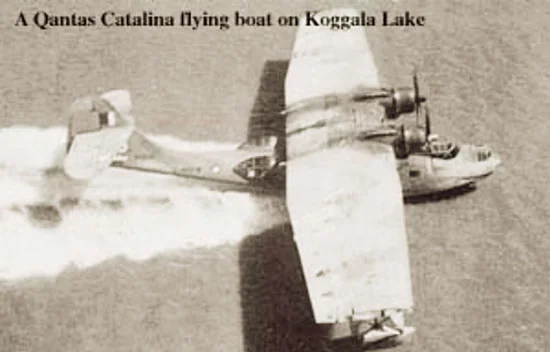
Sources:
- The Sunday Times Plus Section
- Double Sunrise: History’s Longest Ever Commercial Air Service (simpleflying.com)

